Cost of Standard Grade Cabinet Doors from Cutting Edge
How much do standard grade cabinet doors cost? There is no simple answer to this question, but in this article, we discuss what factors can affect the price.
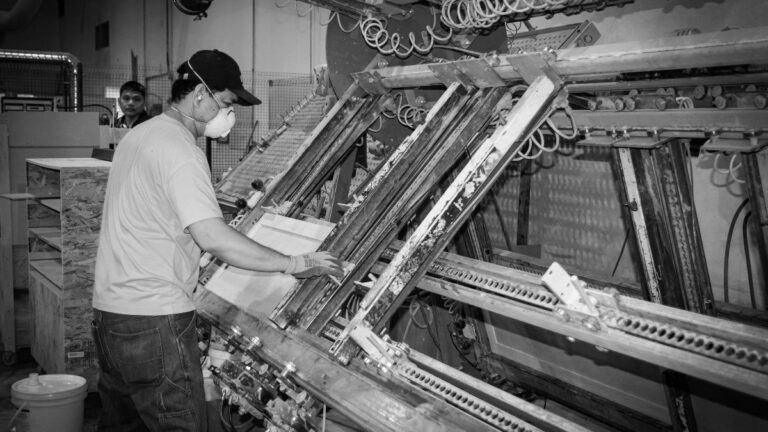

Have you decided that standard grade cabinet doors are what you are looking for? The next step is to learn how much the cabinet doors cost, right?
Unfortunately, you have likely discovered there is no simple answer to this question. You are probably lost somewhere in a swamp of ‘What door style? What wood type? What profile?’
While this and other information is vital for cabinet door manufacturers to know, why can’t they just give you a price?
Our team has produced cabinet doors for over 20 years now. We know that there is no easy answer to give you, but we also understand that you may be unsure about what to do next. While choosing the material grade is a good starting place, many other factors affect the price of your standard grade cabinet doors.
In this article, you will learn what factors affect the pricing of standard grade cabinet doors. You will also find pricing for two of the most common door styles that are available from Cutting Edge.
Factors that affect the price of standard grade cabinet doors
The reasons you can’t get a price for generic standard grade cabinet doors are numerous. The main factors that affect pricing are the door style and the wood species. If you know those two details, you can get a fairly accurate price for your cabinet doors.
Other details can increase or decrease the cost of your cabinet doors. Below is a brief description of the most common factors that affect pricing.
Wood Species
The wood species you choose for your cabinet doors has the greatest impact on the price. Depending on the availability of and demand for the wood species, the price can increase drastically.
Generally speaking, the price increases as the hardness of the wood increases. For example, Alder and Knotty Pine are on the low end of the price range. These are softwoods. On the higher end of the price range are woods like Walnut and White Oak, which are hardwoods.
When popularity is high and availability is low, the price increases regardless of the hardness of the wood.
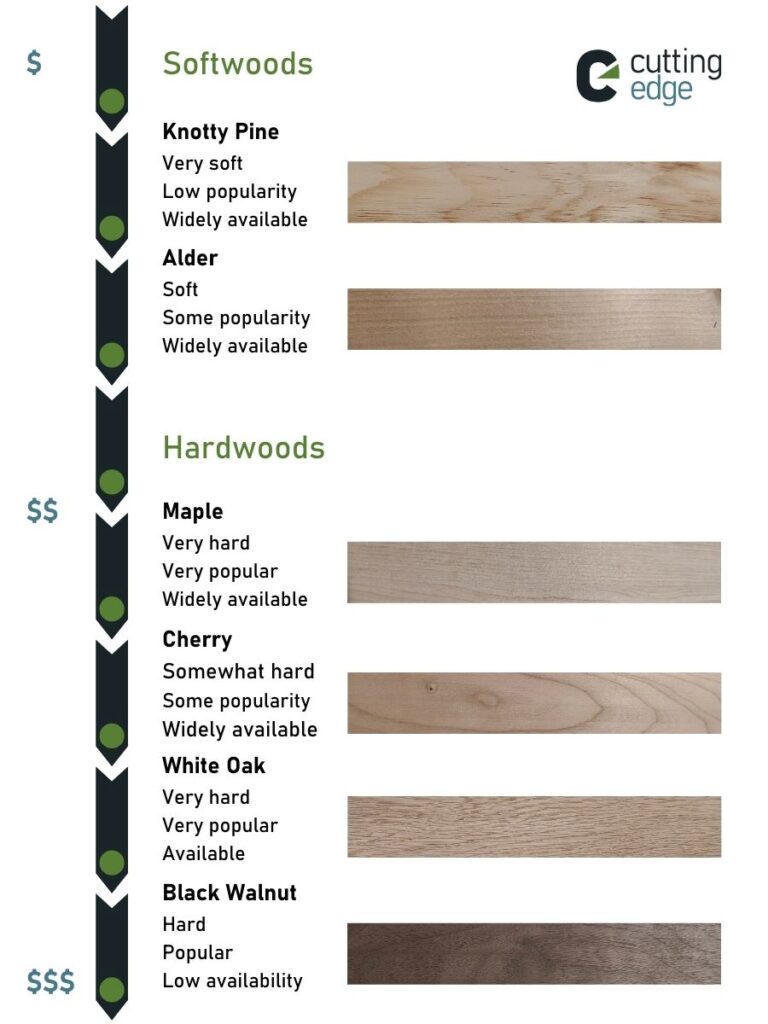

Door Style
The door style also has a major impact on cabinet door pricing. As the complexity of the door increases, the price increases accordingly.
Very simple door styles, like veneer slabs or plywood panel doors, cost much less than complex door styles like mitered raised panel doors or arched raised panel doors.


Lumber Cut
In cabinet door manufacturing, three types of lumber cuts may be available: flat cut (or plain sawn), quarter cut (or quarter sawn), and rift cut (or rift sawn).
Some wood species, like Alder, are only available in flat cut. This decision is usually made by the lumber mill. If there is minimal demand for quarter cut or rift cut lumber in a specific wood type, they will not produce those lumber cuts.
Maple and Walnut are among the wood types that have two lumber cuts available: flat cut and rift/quarter cut. Rift/quarter cut is a combination of rift cut and quarter cut lumber. This lumber cut is available for wood species that don’t have a distinct difference between the rift cut and quarter cut lumber.
Other wood species, most notably White Oak, are available in all three lumber cuts.
Flat cut lumber is the most common, and therefore the least expensive, lumber cut. Quarter cut and rift cut lumber are much more expensive because the mill can get less yield per log.
Custom Details
Adding custom details adds complexity to your door order. Choosing a custom frame width is a fairly simple change, and will only increase the price by about $1.00 per square foot. Requesting a fully custom door (like an X panel door or an arched valance) will increase the cost by at least $25.00 per piece.
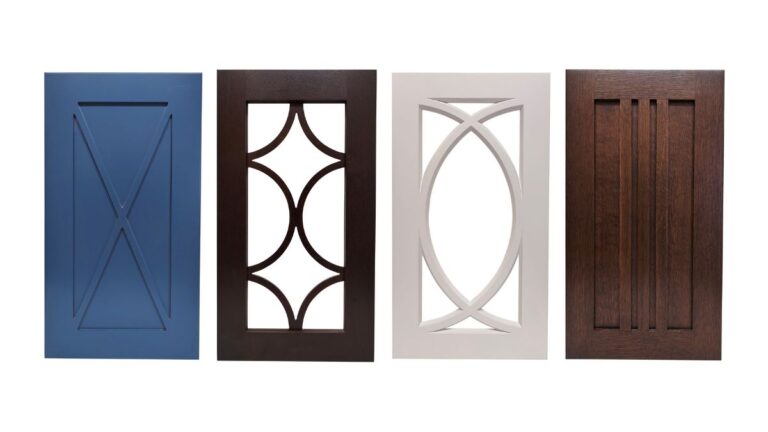

Additional Options - Hinge Drilling and Finishing
If you are looking for ‘just the raw doors’, you will get the base price available. There are additional options you can choose. You can request that your doors be pre-drilled for Blum hinges, which would add about $2 per door.
You can also choose to have your doors finished. Depending on the finish type you select, the price will increase. Again, as the complexity of the finish you choose increases, the price increases accordingly.
Adding a clear lacquer finish will increase the price by at least $13.00 per square foot. Choosing a custom finish, like a painted and glazed finish, will increase the price by at least $38.00 per square foot.
Square Footage
Last but not least, the square footage of your cabinet door affects the price. All cabinet door pricing from Cutting Edge is per square foot.
When you calculate square footage, think of it as the area of the door. There are 4 simple steps for calculating square footage:
- Measure the width in inches
- Measure the height in inches
- Multiply the width by the height
- Divide by 144
Once you have the square footage, multiply that number by your square foot price to determine the cost of your cabinet door.
Different door styles may have a minimum square footage used for pricing. All doors, regardless of how small they are, take a certain amount of time to assemble. The minimum square footage for plywood panel doors and drawers is 1.5 square feet per piece.


The cost of ‘standard’ cabinet doors
While you have already learned there is no easy answer to this question, there are some door styles that are consistent across the industry. The traditional Red Oak raised panel door is one of these door styles. And yes, we can give you a rough price for this and another popular door style!
The pricing provided below does not include finishing costs – these prices are for raw cabinet doors.
Also, keep in mind that the factors you learned about earlier in this article can affect the pricing of these standard door styles. Good news though – if you are eligible for contractor pricing, your discount applies to these prices!
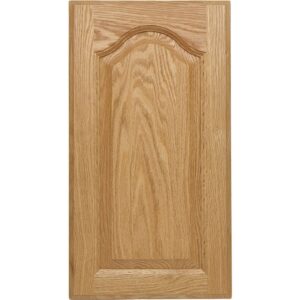

Red Oak Arched Raised Panel:
Red Oak arched raised panel doors are a traditional door style and have featured in many kitchens over the years.
While this door style is no longer as popular today as it has been, it is still one of the most well-known door styles in the industry.
Raw cabinet doors in the Red Oak arched raised panel door style cost at least $49.24 per square foot.
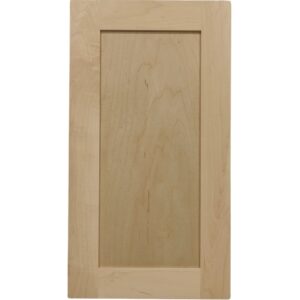

Maple Shaker Style:
Maple shaker doors have become increasingly popular over the last 10 years. There is no better option for a clean and classic cabinet door.
Raw Maple shaker-style doors (with plywood panels) cost at least $24.18 per square foot.
There are many other door styles that you could want pricing for, but these two are the most well-known door styles.
Cost of standard grade cabinet doors: there is no quick answer
When you started reading this article, you wanted to know the quick, simple answer for the cost of standard grade cabinet doors.
Now, you understand why there is no simple answer.
Many factors affect the cost of cabinet doors. From the door style to the wood species, to the lumber cut, and more – every little detail can change the price.
While knowing what can impact the price is helpful, having the actual cost is more useful.
For up-to-date pricing, visit our online ordering platform to either place a quote or submit an order.

